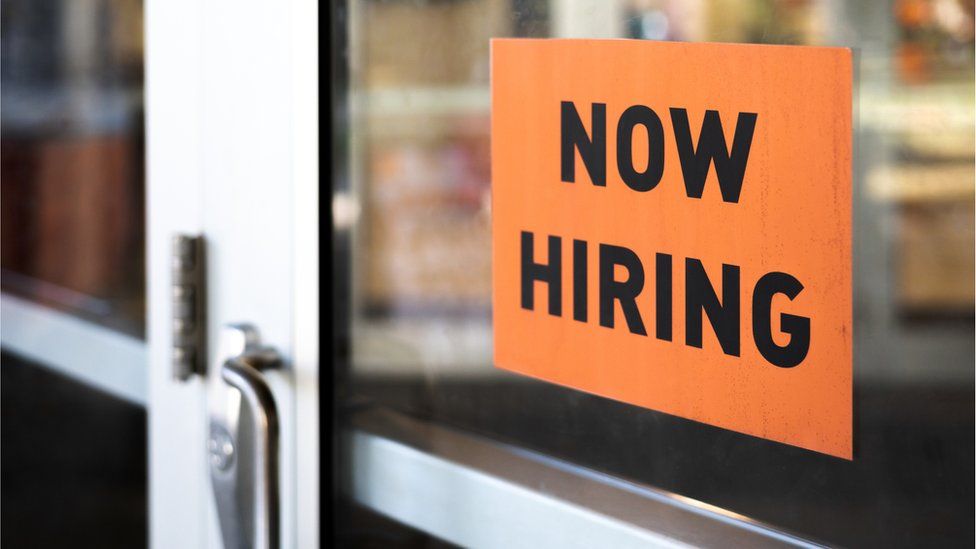NI employment rate at highest level since 2020
- Published

Northern Ireland's job market remained strong at the start of this year with the employment rate reaching its highest level in four years.
The employment rate is a measurement of the percentage of working age adults who are in a job.
Immediately before the pandemic in the period December-February 2020 it reached 72.5%.
It fell to around 67% during the pandemic but in the period December-February 2024 recovered to 71.7%.
The figures suggest that unemployment remains very low with a rate of just 2.2%.
More recent data suggests the jobs market could have softened slightly in March.
HMRC figures suggest the number of people on company payrolls fell by 0.2% in March to 799,551. That is an early estimate and subject to revision.
An alternative measure of unemployment, the number of people claiming unemployment related benefits, also increased slightly in March to 3.8%.
However that is within the range seen over the last two years, when the claimant count has been no higher than 3.8% and no lower than 3.6%.
Meanwhile the Northern Ireland Chamber of Commerce quarterly survey suggests recruitment intentions remain strong across the private sector.
Just over six in 10 members surveyed were trying to recruit in the first quarter of this year.
The balance of firms expecting employment to grow in the next three months was positive, meaning more firms are expecting employment to grow than contract.
The balance of manufacturers expecting employment to grow in the next three months increased slightly to +22% (+17% in quarter four, 2023).
For the service sector the balance increased to +35%, up from +22% at the end of last year.
The survey of more than 200 members was carried out between 15 February and 8 March.
Related Topics
- Published12 March
- Published11 March